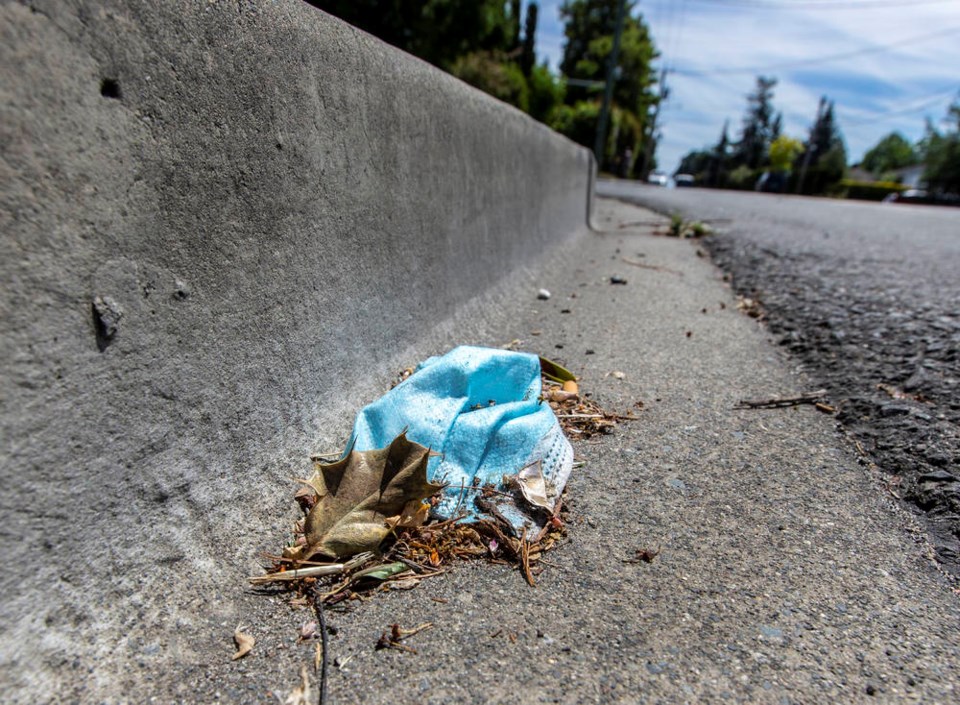Canada banned DDT in 1972.
It hauled 1.5-litre glass pop bottles off the shelves in 1979 after they kept exploding when tipped over.
That was the same year the country prohibited nunchucks, a result of the kung fu craze that inspired us to whip the weapons around and bonk each other — or, more often, ourselves — on the noggin. It’s too bad TikTok wasn’t around in the Look-at-me-I’m-Bruce-Lee-ow-my-head era.
Same goes for lawn darts, the culling-the-herd toys whose sale has been illegal since 1989, the year before the authorities phased out the leaded gasoline in your dad’s pickup truck, the one with the 30.06 in the rifle rack and the eight kids riding in the back.
Baby walkers were added to the no-sale list in 2004. Can’t buy them at garage sales. Can’t import them from the U.S. If you have one, you’re supposed to destroy it.
The point is, authorities ban all sorts of stuff in the name of saving us from ourselves.
Next up: single-use plastics — although we’re still hazy on the details.
Justin Trudeau announced two years ago this week that Canada would do away with single-use plastic goods for which alternatives exist. Last October, Ottawa identified six specific items — plastic checkout bags, stir sticks, six-pack rings, cutlery, straws and food ware made from hard-to-recycle plastics — that would be subject to regulation by the end of 2021.
Ah, but by the time that announcement was made, the landscape had changed. With pandemic protocols discouraging the use of reusable containers and encouraging the sale of take-out fare and individually packaged food and drink from stores, our use of single-use items was rising.
That was reflected Wednesday with the release of data from last year’s Great Canadian Shoreline Cleanup, an annual exercise in which thousands of volunteers scour the country’s beaches for garbage, recording what they find.
“We were startled to see that single-use food and beverage litter increased from 15.3 per cent of all litter in 2019 to 26.6 per cent in 2020,” spokeswoman Julia Wakeling of Bowen Island was quoted as saying. Think bottle caps, packaging. Also, volunteers reported finding masks and other personal protective equipment.
This comes in the same week that the BBC reported on a University of Cadiz, Spain, analysis of “global inventories cataloguing more than 12 million pieces of litter found in and around rivers, oceans, shorelines and the seafloor.” Eight in 10 items were made of plastic, and 44 per cent of the plastic bits were related to takeaway food and drinks, the BBC story said.
This presents a conundrum. We want to keep safe during COVID, avoid others’ germs. We want to support restaurants that have been barely getting by, that need the take-away and delivery trade, and that might not be able to afford or find alternatives to plastic.
Yet we also don’t want to add to the waste. Note that Victoria’s on-again, off-again restrictions on single-use plastic bags finally came into effect in April. Saanich council is expected to give final approval to its bag bylaw June 21, with the regulations kicking in on Aug. 20. Esquimalt’s bylaw prohibiting most single-use plastic bags takes effect Aug. 13.
Change isn’t always as easy as writing a bylaw, though. The industry group Restaurants Canada says food-service businesses want to support Canada’s goal of achieving zero plastic waste, but warns that switching to non-plastic single-use alternatives isn’t always safe or effective, particularly for transporting food at warm temperatures.
Its website says restaurateurs have been looking at biodegradable plastics, bioplastics and compostable plastics, but there’s “currently no universal solution or method to properly dispose of these non-plastic alternatives that will ensure better environmental outcomes.”
Businesses face patchwork, sometimes contradictory rules that change from municipality to municipality (sound familiar, Dysfunction-By-The-Sea?) and waste hauler to waste hauler. Restaurants also want consumer education so that single-use items are composted or recycled properly.
Good luck with that last one. Some people just don’t care where they toss their disposables. A glance at the discarded masks in Victoria gutters attests to that.
So, where does that leave Ottawa’s latest attempt to save us from ourselves?
This month, when asked for a timeline for implementing its ban, the federal Environment Department merely said it would “publish draft regulations on single-use plastics, including the six items proposed for a ban or restriction… for consultation in the coming months.”
In the meantime, pick up after yourself.



